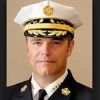Editor’s note: Chief Adam K. Thiel reflects on the incredible toll taken of emergency responders during Superstorm Sandy and reminds us to keep local responders in the forefront of discussions.
I know many of you are still involved in the response and recovery efforts after Hurricane Sandy. For the rest of us, I hope we can all join in sending our best wishes, donations and other assistance to those in affected areas for what promises to be a prolonged effort to return to normalcy.
As I sat in my own Emergency Operations Center while Sandy approached the East Coast last Monday (yes, it’s been a week), I knew we had the potential for the types of incidents our brothers and sisters experienced in New York and New Jersey.
After dealing with a number of hurricanes and tropical storms during my career, I understand how challenging, and dangerous, it is to just maintain our ability to handle “routine” calls in high winds, driving rain and floodwaters, much less have to address the major blazes and urban conflagrations faced by firefighters in Sandy’s hardest hit areas.
Unfortunately, the storm claimed the life of at least one firefighter, and we’re probably fortunate that others were not severely injured, or worse, given the magnitude of this event and its far-reaching impact.
Once again, the world saw American firefighters, EMS personnel and law enforcement officers place their lives on the line to save others. Despite the rhetoric of a hard-fought presidential campaign, our citizens were again reminded that their local first responders remain the first line of defense — here at home — against all disasters, regardless of the cause.
But at what price does this come?
How many departments, and responders, were placed at grave risk from the “not so long term” effects of the Great Recession? How many response units went into harm’s way partially staffed, or stayed in quarters for a lack of resources? How many chiefs and company officers made the impossible decisions to respond to this or that incident with limited resources?
Hurricane Sandy will dominate the news for a while longer. How long, who knows?
Until then, while our first priority is helping our fellow firefighters recover, it’s important to keep local fire and emergency services at the forefront of discussions about lessons identified, and reinforced, by our collective response to this latest disaster.
Stay safe.












